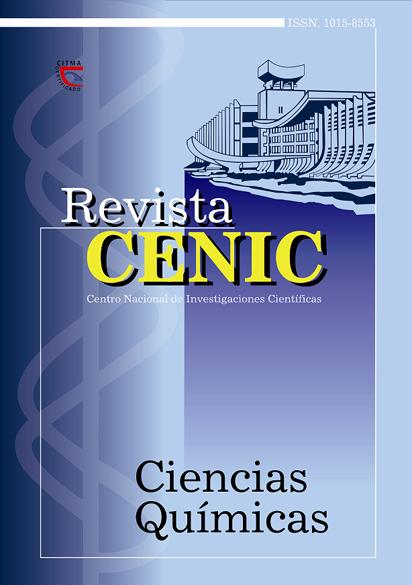Obtaining high molecular mass fatty acids from beeswax Apis mellifera
Abstract
In the last years, special attention has been paid to the pharmacological effects of very long chain fatty acids
(VLCFA). Beeswax is considered safe for human consumption and constitutes an attractive source of VLCFA. Because of
that; the aim of this paper was to obtain a VLCFA mixture from such crude wax. To do that, the wax was initially submitted
to saponification; after that, Soxhlet extraction and successive purifications with organic solvents were carried out. The
obtained mixture was characterized by its organoleptic and physical properties, as well as by the spectroscopic data (IR
and GC-MS). The process yielded 5.9 % with good reproducibility (CV = 3.4 %), and the obtained substance was a white
crystalline powder with a melting point ranging from 74 to 77 oC. It was composed, in around 90 %, of nine VLCFA in
defined proportions: C16:0 (0.4 %), C22:0 (1.1 %), C24:0 (32.7 %), C26:0 (13.1 %), C28:0 (13.2 %), C30:0 (10.7 %), C32:0 (8.3 %), C34:0 (8.2 %),
C36:0 (1.4 %), where C24:0 is the major component. Other compounds, detected in low concentrations, were VLCFA with odd
carbon atoms (C25:0, C27:0, C29:0, C31:0) and unsaturated (C32:1, C34:1, C36:1), paraffins (C27, C29, C31), alcohols (C24-C34), (ω-1 hydroxy
acids (C22:0, C24:0, C26:0) and α-(ω-1) diols (C26-C30). The reproducibility and yielding of the obtaining process, as well as the
purity and quantity reached of this VLCFA mixture; allow its future possible pharmacological evaluation.

Downloads
Published
How to Cite
Issue
Section
License

This work is licensed under a Creative Commons Attribution-NonCommercial-ShareAlike 4.0 International License.
Los autores que publican en esta revista están de acuerdo con los siguientes términos:
Los autores conservan los derechos de autor y garantizan a la revista el derecho de ser la primera publicación del trabajo al igual que licenciado bajo una Creative Commons Atribución-NoComercial-CompartirIgual 4.0 que permite a otros compartir el trabajo con un reconocimiento de la autoría del trabajo y la publicación inicial en esta revista.
Los autores pueden establecer por separado acuerdos adicionales para la distribución no exclusiva de la versión de la obra publicada en la revista (por ejemplo, situarlo en un repositorio institucional o publicarlo en un libro), con un reconocimiento de su publicación inicial en esta revista.
Se permite y se anima a los autores a difundir sus trabajos electrónicamente (por ejemplo, en repositorios institucionales o en su propio sitio web) antes y durante el proceso de envío, ya que puede dar lugar a intercambios productivos, así como a una citación más temprana y mayor de los trabajos publicados (Véase The Effect of Open Access) (en inglés).













